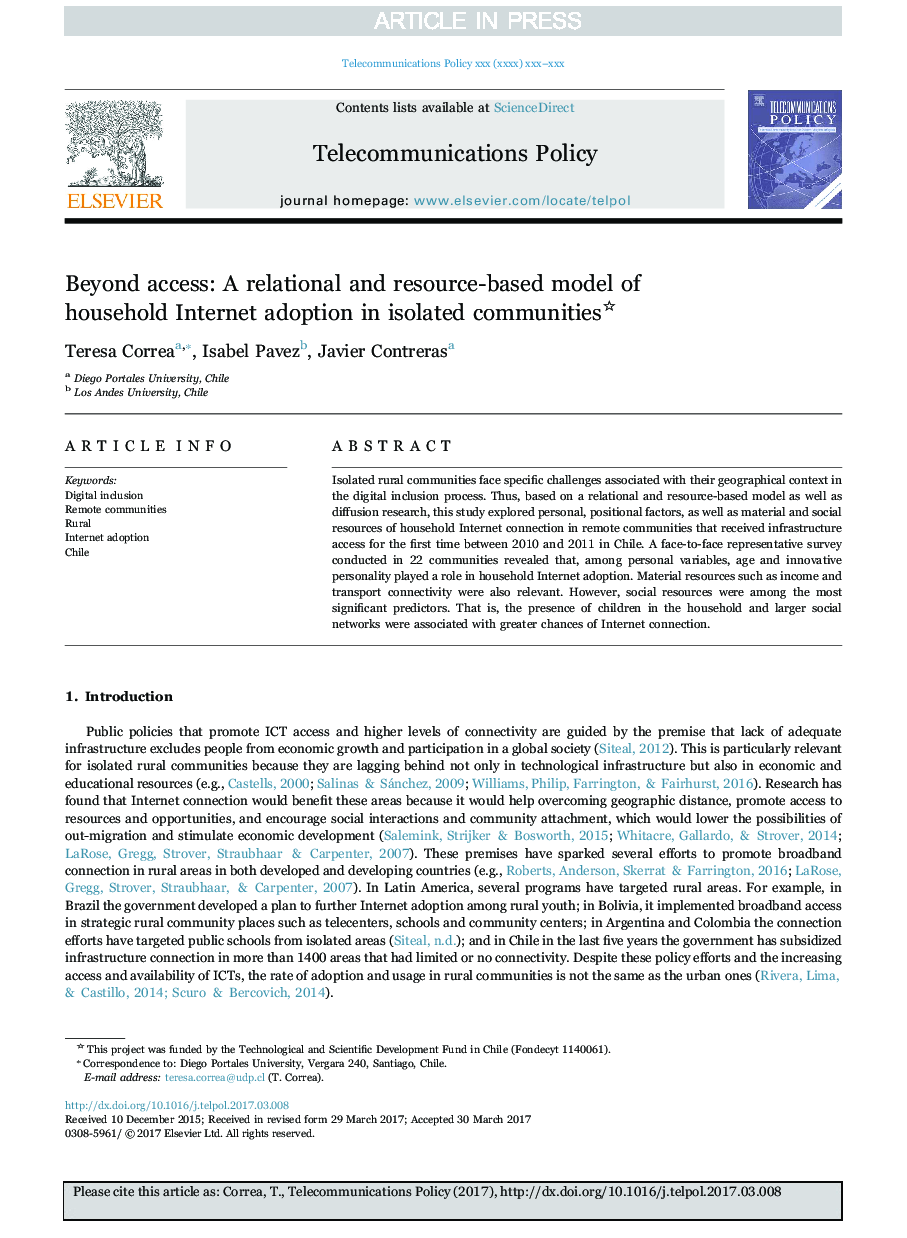| Article ID | Journal | Published Year | Pages | File Type |
|---|---|---|---|---|
| 6950346 | Telecommunications Policy | 2017 | 12 Pages |
Abstract
Isolated rural communities face specific challenges associated with their geographical context in the digital inclusion process. Thus, based on a relational and resource-based model as well as diffusion research, this study explored personal, positional factors, as well as material and social resources of household Internet connection in remote communities that received infrastructure access for the first time between 2010 and 2011 in Chile. A face-to-face representative survey conducted in 22 communities revealed that, among personal variables, age and innovative personality played a role in household Internet adoption. Material resources such as income and transport connectivity were also relevant. However, social resources were among the most significant predictors. That is, the presence of children in the household and larger social networks were associated with greater chances of Internet connection.
Related Topics
Physical Sciences and Engineering
Computer Science
Information Systems
Authors
Teresa Correa, Isabel Pavez, Javier Contreras,
